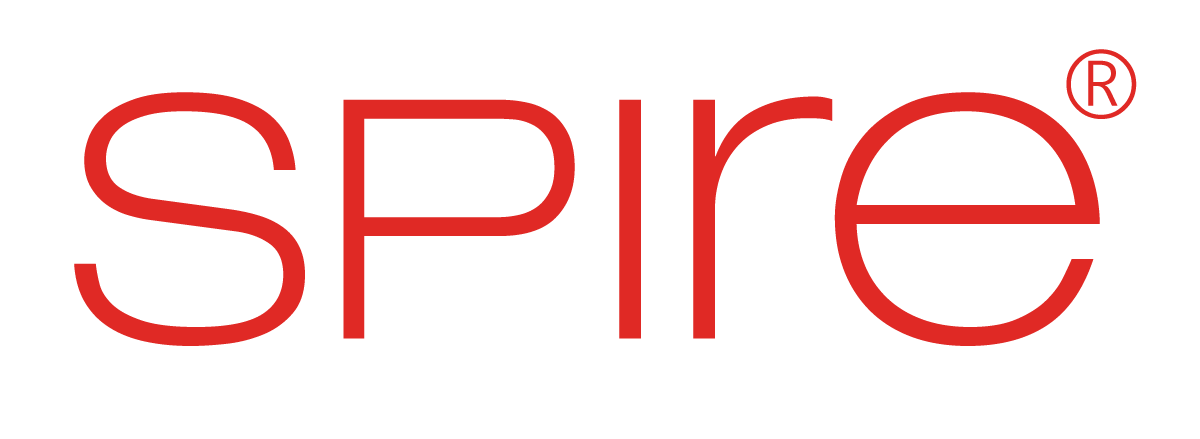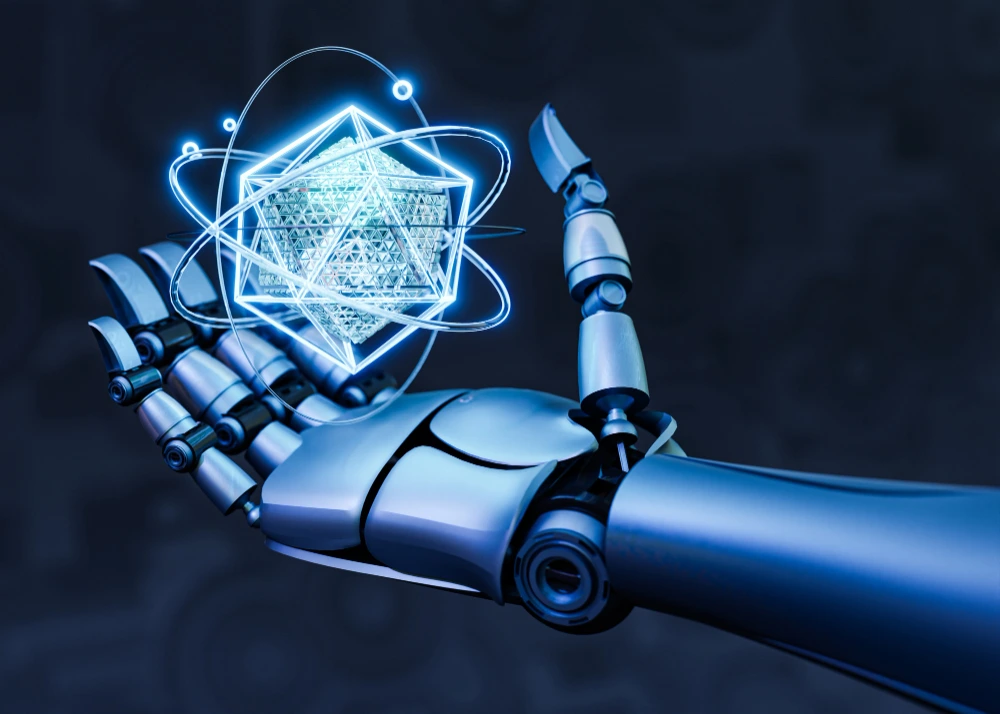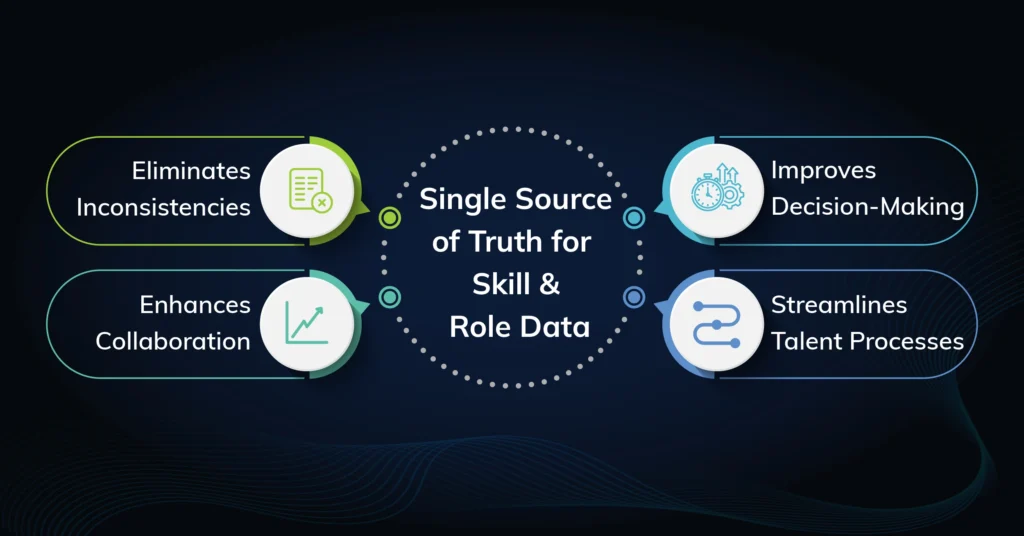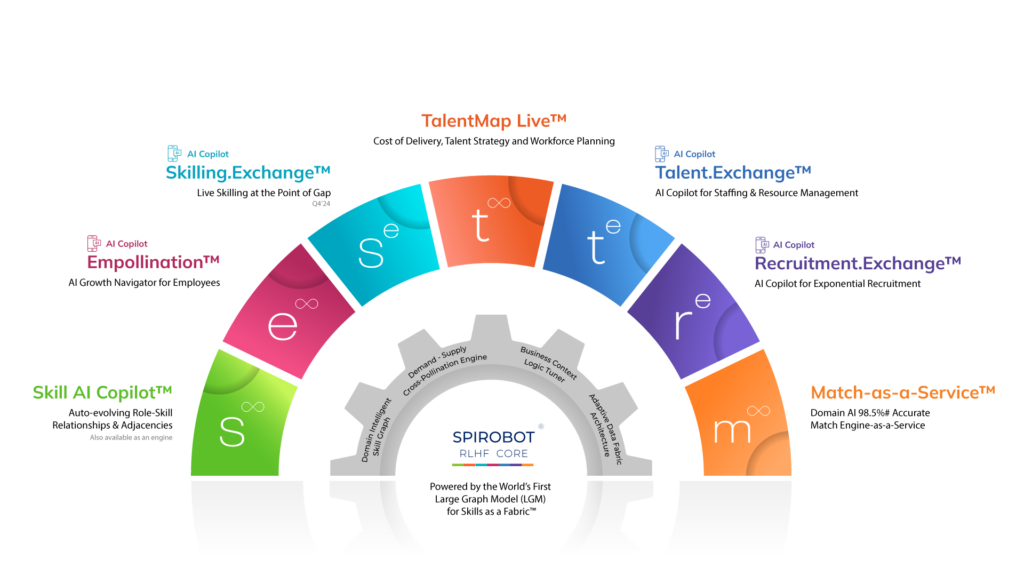The talent landscape is undergoing a dramatic transformation. Skills are evolving faster than ever, and organizations need a dynamic approach for identifying, developing, and deploying the right talent. At the heart of this transformation lies a critical concept: a single source of truth for skills and roles data.
In this blog post, we’ll explore the significance of a unified skills and role data source, the pressing challenges of siloed data, and the compelling benefits of a centralized approach. We’ll then demonstrate how Spire.AI innovative solutions—the auto-evolving role-skill framework and generative skills-as-a-service—serve as a central hub for this crucial information, ensuring uniformity across talent management systems and processes.
Why a Single Source of Truth For Role and Skill Data Matters
Imagine the chaos if every department in your organization maintained its version of financial data. Decisions based on such inconsistent information would be disastrous. The same principle applies to skills and role data.
Here’s why a single source of truth for role and skill data is critical:
Eliminates inconsistencies
Siloed data leads to discrepancies in how skills are defined and measured across departments. A central framework ensures everyone is working with the same information.
Improves decision-making
Consistent data empowers better decision-making in talent acquisition, development, and deployment. It allows you to identify skill gaps accurately, match candidates with the right roles, and tailor training programs.
Enhances collaboration
A unified source fosters collaboration across departments. Talent management teams, hiring managers, and employees can all access the same information, leading to a more cohesive talent strategy.
Streamlines talent processes
Consistent data facilitates automation and streamlines talent processes like recruitment, performance management, and career development.
Challenges of Siloed Skills and Role Data
The fragmented nature of skills and role data poses significant hurdles to effective talent management. Let’s delve deeper into some of the most common challenges organizations face:
1. Static Skill Libraries
Many organizations still rely on traditional skill libraries. These libraries often suffer from several limitations:
- Outdated Information: The rapid pace of technological advancement and evolving business needs quickly render static skill libraries irrelevant. Skills become obsolete, new ones emerge, and libraries must catch up. This creates a significant gap between the skills listed and those required for success in today’s job roles.
- Limited Flexibility: Static libraries lack the flexibility to adapt to the specific needs of different departments or roles. They often offer a generic list of skills that may not capture the nuances required for specialized positions. This can lead to inaccurate assessments of candidate skills and employee capabilities.
2. Manual Maintenance
Maintaining these static skill libraries is a tedious and error-prone manual process. It typically involves:
- Time-consuming Updates: Updating the libraries requires dedicated time and resources, which can burden HR teams already stretched thin.
- Inconsistent Definitions: A standardized approach to updating leads to consistency in how skills are defined and categorized. Different people may add new skills or modify existing ones without proper oversight, leading to confusion and inaccuracies.
- Human Error: Manual data entry is susceptible to human error, introducing inconsistencies and inaccuracies into the system. Typos, misinterpretations, and omissions can further distort the role and skill data, compromising reliability.
3. Inconsistent Frameworks
Siloed data often leads to inconsistent categorizing and labeling skills. Different departments may use their terminology for the same skills, creating confusion and hindering data analysis. This can manifest in several ways:
- Different Terms for the Same Skill: For example, the marketing team might use “content creation,” while the engineering team might use “technical writing” to refer to the same core skill. This makes it difficult to identify employees with the necessary skills across departments.
- Varying Levels of Detail: Some departments might use broad skill categories like “communication,” while others might have more granular breakdowns like “written communication” and “public speaking.” This inconsistency makes it challenging to compare skills across different roles and teams.
- Lack of Standardized Definitions: Even when the same term is used, its definition can vary. One department might define “analytical thinking” as the ability to interpret data, while another might include problem-solving within its meaning. This inconsistency makes it difficult to assess employee skills accurately.
4. Data Integration Complexities
Integrating skills data with various talent management systems can be challenging. Different systems utilize diverse data formats and structures, making seamlessly exchanging information difficult. This can lead to:
- Data Silos Perpetuation: Difficulties in integrating data perpetuate silos by forcing departments to maintain their own skill data sets within their talent management systems. This makes gaining a holistic view of the organization’s skill landscape impossible.
- Limited Insights: When role and skill data is siloed, it becomes difficult to extract valuable insights. Organizations cannot identify skill gaps, hindering talent development and workforce planning efforts.
- Inefficient Operations: The inability to share role and skill data across systems creates inefficiencies. For example, recruiting teams might need help finding qualified candidates with the necessary skills because their systems must connect effectively with employee profiles’ roles and skill data.
These challenges highlight the critical need for a centralized skills and role data approach. By implementing solutions like Spire.AI auto-evolving role-skill framework and generative skills-as-a-service, organizations can overcome these hurdles and unlock the full potential of their talent pool.
Spire.AI Copilot for Talent: The Solution for a Single Source of Truth for Role & Skill Data
Spire.AI offers a powerful solution that empowers organizations to break down silos and establish a single source of truth for their talent information. This framework acts as the central nervous system of talent management, enabling organizations to move beyond static skills lists and embrace a dynamic understanding of their workforce. With AI continuously identifying new skills and their relationships, talent teams can anticipate future needs, develop targeted training programs, and ensure their people possess the right skill sets to thrive in an ever-changing landscape. This empowers individuals to grow in their careers and equips organizations with the agility needed to navigate the complexities of the future workforce.
Why is Spire.AI your Solution for a Single Source of Truth For Role and Skill Data?
– Domain-intelligent Large Graph Model (LGM) for In-depth skill identification
– Auto-evolving role-skill framework
– Continuous Learning and Adaptation
– Customizable & ready to go live
– Tailored to your industry
– Predictive Skill Discovery
At the heart of Spire.AI solution lies the Domain-Intelligent Large Graph Model (LGM) for Skills. This LGM goes beyond the limitations of static libraries by leveraging cutting-edge AI for:
Auto-Evolving Role-Skill Framework: This powerful technology goes beyond simply identifying keywords for in-depth skill identification. It analyzes vast amounts of data, including industry trends, academic research, and competitor information, to map complex skill relationships and identify the full spectrum of skills required for each role, not just the most frequently mentioned ones. This ensures the framework captures the nuanced skill sets needed for success in today’s jobs.
Continuous Learning and Adaptation: The framework doesn’t gather dust on a shelf or stay hidden in a spreadsheet. It continuously learns and adapts to the ever-changing skill landscape. The LGM identifies emerging skills by analyzing new data sources and industry trends and adjusts the framework accordingly. This ensures your role and skill data remains relevant and reflects the latest industry demands, eliminating the need for manual updates and revisions.
Customization for a Perfect Fit: The framework isn’t a one-size-fits-all solution. It’s designed to be easily configurable to your specific industry, company culture, and unique needs. You can define custom skill categories, tailor the framework to different departments or job families, and ensure it aligns seamlessly with your existing talent management processes.
Predictive Skill Discovery: Staying Ahead of the Curve: Beyond identifying existing skills, Spire.AI can predict the emergence of new skills based on industry trends and technological advancements. This allows you to proactively prepare your workforce for the future by incorporating these emerging skills into training programs and talent development initiatives.
By leveraging Spire.AI solutions, organizations can overcome the challenges of siloed skills and role data. They can establish a centralized hub for skill information, gain a holistic view of their workforce capabilities, and make data-driven decisions to optimize talent acquisition, development, and deployment.
Applications of Single Source of Truth for Role and Skill Data
The future of talent operations is intricately linked to a centralized, auto-evolving role-skill framework. In the coming years, an auto-evolving role-skill framework will become necessary to combat the challenges of a highly dynamic business environment. Retaining and nurturing talent will be extremely important, and you will need a system connecting you to every workforce member for maximum output.
Applications of a Single Source of Truth for Role and Skill Data
– Learning and development
– Performance management
– Internal mobility
– Compensation and benefits
Beyond core talent management functions, auto-evolving role-skill frameworks have the potential to revolutionize several aspects of the future workforce.
- Learning and development: Personalized learning pathways can be automatically generated based on individual skill gaps identified by the framework. Employees can upskill and reskill efficiently, ensuring they stay current with evolving job requirements.
- Performance management: Objective performance evaluations can be conducted by comparing employee skill sets against the framework’s defined requirements for their roles. This data-driven approach fosters transparency and empowers continuous improvement.
- Internal mobility: The framework can identify employees with transferable skills, facilitating internal talent mobility and career growth opportunities. It can also predict team skill gaps, allowing for proactive internal talent allocation based on evolving project needs.
- Compensation and benefits: By understanding the actual value of skills within the organization, compensation structures can be more accurately designed, reflecting the market demand for specific skill sets.
This glimpse into the future highlights the transformative potential of auto-evolving role-skill frameworks, paving the way for a more dynamic, data-driven, and future-proof approach to talent management.
Final Thoughts
By establishing a single source of truth for role & skill data, you can unlock your people’s full potential and navigate the complexities of the future workforce.
Spire.AI’s auto-evolving role-skill framework empowers you to:
- Eliminate data silos and inconsistencies
- Gain a holistic view of your workforce capabilities
- Make data-driven decisions for talent acquisition, development, and deployment
- Prepare your workforce for the future with predictive skill discovery
Embrace a centralized approach to skills and roles. Empower your talent and future-proof your organization’s success. Let Spire.AI be your Copilot for Talent.







